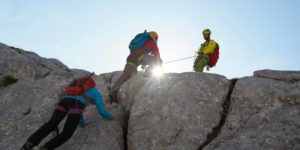What is distance learning?
Category: Career Development, Learning, Upskilling
How to become an SEN teacher
What to include in a CV: key skills and interests
Category: CV Help, General, Job Market
Explore the latest articles
How to write a great CV in 2024: Everything you need to include
Category: Career Development, CV Help, General, How To
What makes a great project manager?
Category: Career Development, General, Learning
How to get into cyber security: 15 tips to start your career
Category: Career Development, Digital Skills, Job Market, Learning
What makes a great project manager?
Category: Career Development, General, Learning
How to get into cyber security: 15 tips to start your career
Category: Career Development, Digital Skills, Job Market, Learning
How to become a data scientist without a degree
Category: Career Development, Digital Skills, Job Market, Learning
How to communicate like a leader: 10 leadership communication tips
Category: Career Development, Learning
6 jobs you can do with a nursing degree
Category: Career Development, General, Job Market, Learning
5 jobs you can do with a business administration degree
Category: Career Development, General, Job Market, Learning, Upskilling
News about FutureLearn
Are stackable credits the future of education?
Category: Career Development, Current Issues, FutureLearn News, Learning, Upskilling
Statement on Higher Education in Afghanistan
Category: FutureLearn News, Press, Press Releases
FutureLearn partners with Global University Systems to enhance career opportunities for millions of learners. Jo Johnson appointed chairman of the board.
Category: FutureLearn News, Press, Press Releases
Blog categories
FutureLearn offers courses in many different subjects such as
Register for free to receive relevant updates on courses and news from FutureLearn.
-
Create an account to receive our newsletter, course recommendations and promotions.
Register for free












